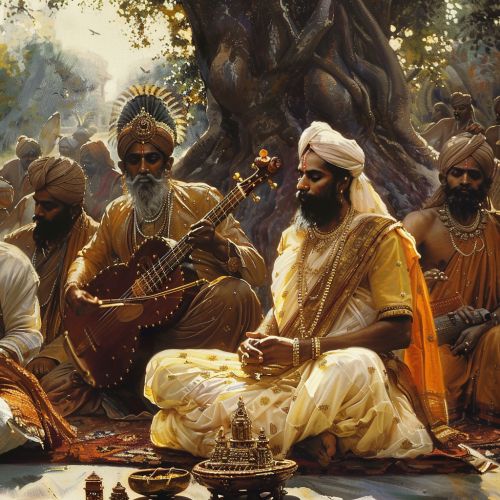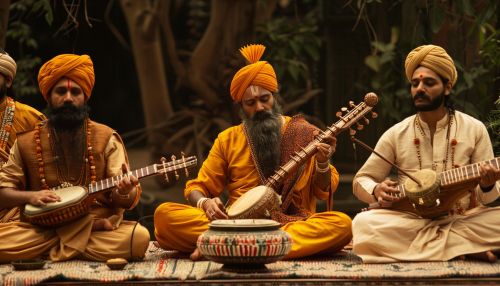Indian music
History
Indian music has a rich and diverse history that spans thousands of years. The earliest references to music in India can be found in the ancient scriptures of the Vedic period, around 1500 BCE. The Sama Veda, one of the four Vedas, is dedicated entirely to music and contains verses to be sung using specific melodies and notations.


During the Mauryan period (322–185 BCE), music was used for both entertainment and spiritual enlightenment. The treatise Nātya Śāstra written by Bharata Muni, which is considered the "fifth Veda", provides detailed information about the theory and practice of music during this period.
The Gupta period (4th to 6th century CE) is often referred to as the "Golden Age" of Indian music. During this period, many musical instruments were developed and the system of ragas and talas was formalized.
Classical Music
Indian classical music is categorized into two genres: Hindustani and Carnatic. Both genres have their roots in the ancient Indian musical tradition, but they evolved differently due to cultural and historical influences.
Hindustani Music
Hindustani music is predominantly found in North India. It is heavily influenced by ancient Hindu musical traditions, historical Vedic philosophy, and the influences of Persian music. The main elements of Hindustani music are raga (melody) and tala (rhythm). The performance usually begins with a slow elaboration of the raga, known as alap, followed by a more rhythmic section accompanied by the tabla.
Carnatic Music
Carnatic music is the classical music of South India. It is more rhythmically intensive and structured than Hindustani music. The main elements of Carnatic music are sruti (musical pitch), swara (notes), raga, and tala. Carnatic music is usually performed by a small ensemble of musicians, consisting of a principal performer, a melodic accompaniment, a rhythm accompaniment, and a drone.
Folk Music
Folk music in India is diverse because of the country's vast cultural diversity. It has many forms including Bhangra, Bihu, Ghazal, Qawwali, and Bhajan. These forms of music are deeply linked to the socio-cultural context, regional identity, and the lifestyle of the people.
Modern Music
Modern Indian music is a fusion of classical, folk, and Western genres. The advent of the Indian film industry, especially Bollywood, has had a significant impact on Indian music. Film music, also known as Filmi music, has become the most popular form of music in India.
Instruments
Indian music boasts a variety of musical instruments, which can be broadly classified into four categories: stringed instruments (Veena, Sitar, Sarod), wind instruments (Bansuri, Shehnai, Harmonium), percussion instruments (Tabla, Mridangam, Ghatam), and drone instruments (Tanpura, Shruti box).
